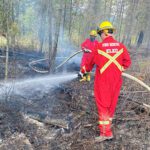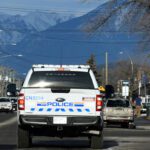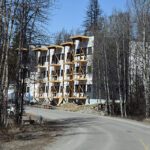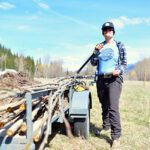Home »

It’s time to rethink forest fire deaths
The “fire triangle.” Every firefighter knows this deadly triangle – fuel, oxygen and heat. When these three elements act in unison you get fire – sometimes deadly fire as was the horrifying case in Arizona last week when these three elements came together and the tragic result was 19 dead members of the elite Granite Mountain Hotshots forest fire fighting team.
This tragedy, the worst in U.S. history since the deadly fire year of 1910 when drought, lightning and tinder-dry fuel in the forest combined to set off the Big Blowup or the Devil’s Broom fire, a conflagration that blackened more than three million once-green acres in Idaho, Montana and southeastern B.C.
The blaze, possibly the biggest ever in North American history, killed 87 firefighters but that was over several days. To the best of this former forest fire fighter’s knowledge, 19 killed in one night in a single forest fire incident is the worst such incident ever.

And quite honestly it sends shivers down my spine when I think back to the decade or so when I fought forest fires when no other work was available. Thanks to dumb luck – it certainly wasn’t brains – I never got trapped by an out-of-control wildfire although I had one close incident in 1967 deep in a canyon near the north end of Kootenay Lake, and just like the tragic Yarnell fire the wind suddenly shifted. But one critical factor was playing in my favour unlike the situation when the Hot Shot team perished.
In my case, the wind shift change came late in the afternoon, and although visibility was poor, it was daylight and I could see the wind change direction and I could feel it as well. As soon as I realized this, I quickly turned around and with the water pump tank on my back – or “piss cans” as every fire fighter called them in those days – I started to lope up the fireguard we’d cut as fast as I could. Puffing like crazy about three–quarters of the way up the steep guard, I decided there was no good reason to be carrying about 30 pounds of water with me so I paused long enough to catch my wind and dump the water out of my five gallon tank. I then scampered up to safety probably not fully appreciating the potential tragedy I had just dodged.
But, and details are still sketchy, it appears the Arizona fire fighters weren’t so lucky because it was night time when the wind made it’s tragic direction change and they were above the fire below them. You can easily figure out the rest. As we all know, heat rises, and because of this, forest fires burn much faster uphill than they do down. Forest fires charge up hill like a raging grizzly bear, igniting the tops of the trees into a crown fire, the most deadly forest fire of them all.
As a result, the ill-fated Hot Shot crew didn’t have a chance. We can only hope their deaths came quickly.
Of course, the second-guessing about the Yarnell tragedy is happening already. Was the crew trained well enough? Were they truly elite? Were they depending too much on the fireproof blanket devices they carry – a device certainly not available in my time – to bail them out of an emergency situation? Did their firefighting plan include an emergency escape route?
But the most interesting question I came across in my research was raised in a email newsletter called the High Country News based in Paonia, Colorado which asked the question; should the young crew have been sent into the scene of the fire in the first place? Elite crews like the Hot Shots, and I imagine all crews for that matter, are told they never should put the value of anything over the value of their own lives. In the case of the Yarnell Hill fire it appears the brave young fire fighters (all under 30 except one)) were deployed because of private homes in the area being burnt, or under threat of being burnt.
And now there are 19 fresh graves to consider. Forest fire fighters die on duty in Canada too, particularly in B.C. Surely it’s time to consider whether these deaths can be justified?
– Gerry Warner is a retired journalist and Cranbrook City Councillor. His opinions are his own.








